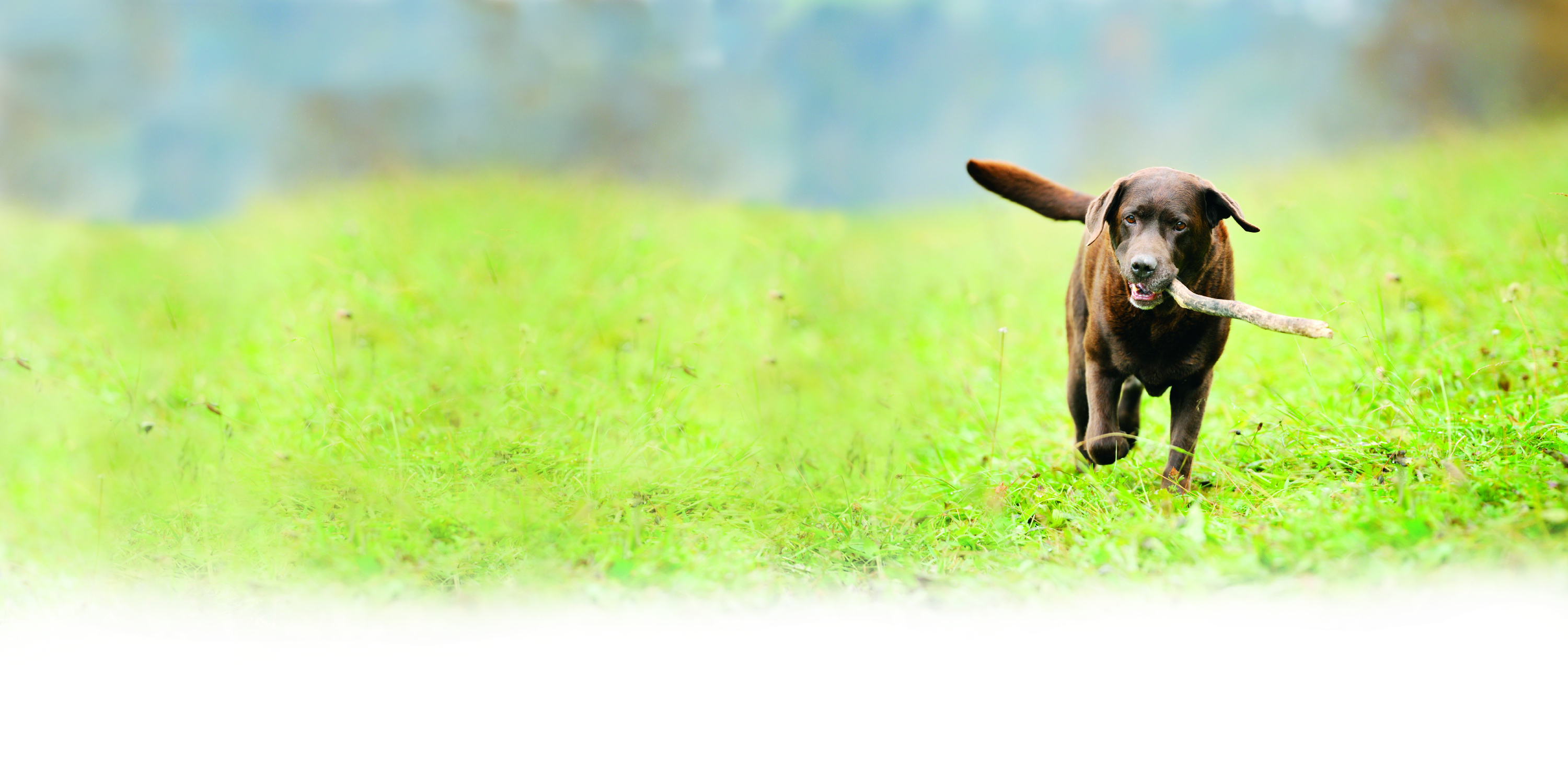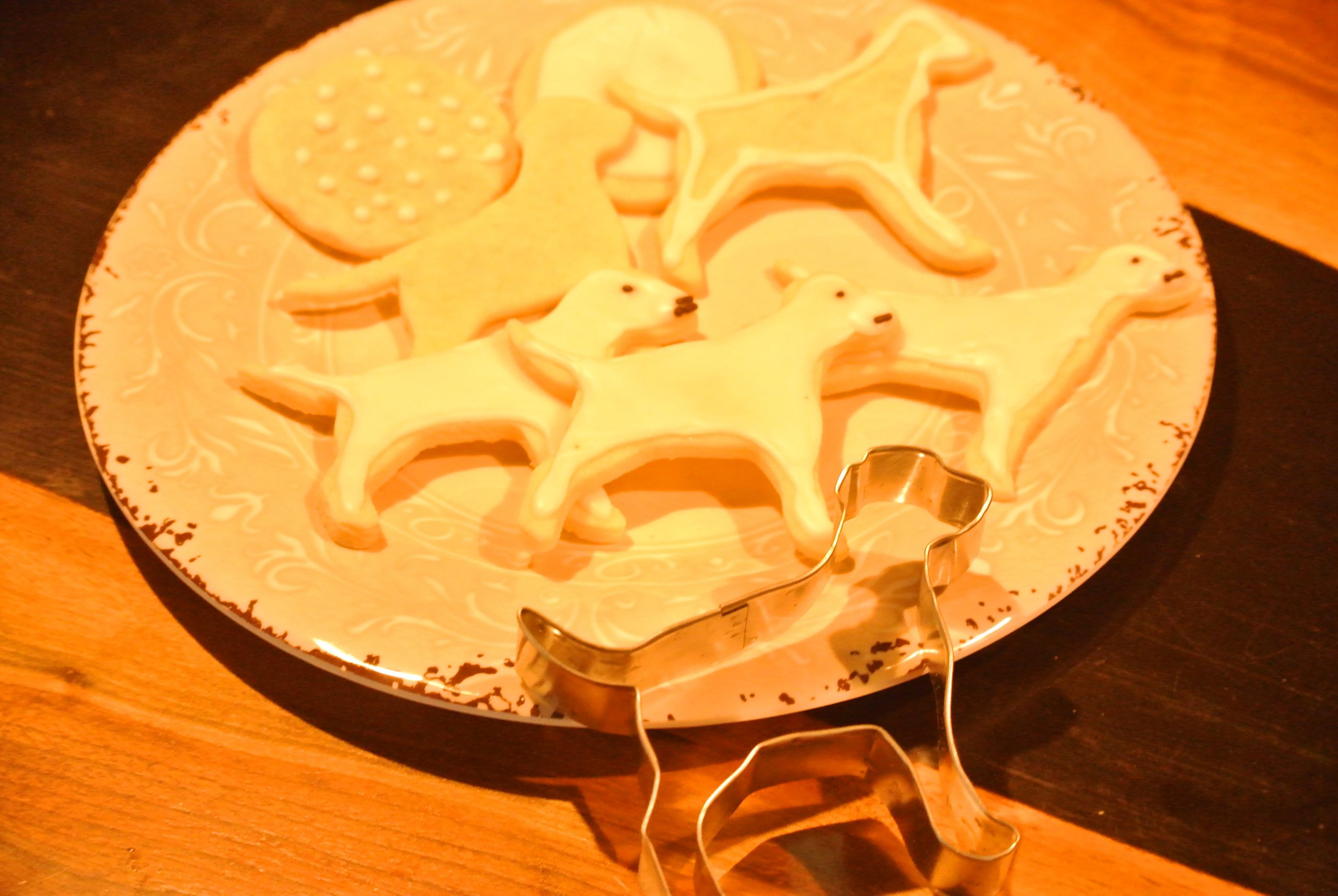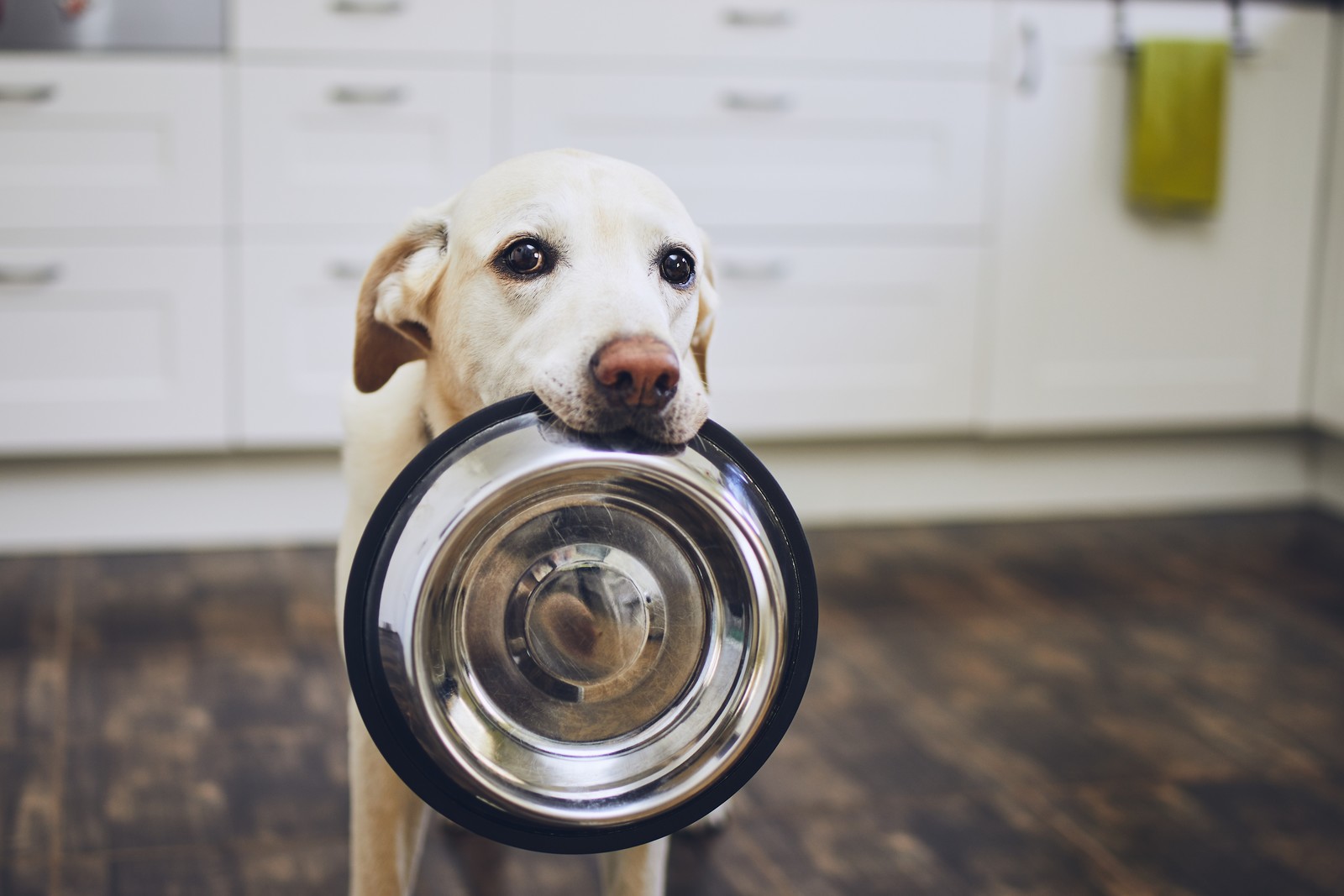by Dr. Dave Erlewein
It is not uncommon for dogs to injure themselves by running into sticks, fences, wire, and other objects. While prompt basic wound care may not fix everything, it can prevent more costly and extensive treatment at a later date. The types of wounds most likely to ruin your Lab’s day are abrasions, contusions, lacerations, and punctures. Abrasions and contusions can usually be treated without professional assistance, while only the smaller lacerations can be treated without surgical closure. Puncture wounds usually need both prompt basic wound care and followup with the help of your veterinarian.
Abrasions are superficial scrapes of the skin that may or may not result in hair loss, but the outer layers of the skin are scraped away. There is no full thickness disruption of the skin. They may be painful depending on the size and depth, and abrasions of the limbs may cause lameness or slight favoring of the leg. These wounds generally heal by scabbing, and most are resistant to infection. Home treatment consists of clipping away the hair around the abrasion so it does not stick to the wound and a thorough cleansing of the wound. Full-strength hydrogen peroxide is a good cleaning agent, or you can use an anti-bacterial soap with lukewarm water. A “tamed” or non-burning iodine (povidone iodine) liquid soap is also an excellent cleansing agent. The abrasion should be cleaned once daily until scab formation occurs.
A contusion or bruise is caused by blunt trauma to the skin and underlying structures and usually occurs when your Lab runs into stumps, logs, posts, etc. There is no immediate skin damage, but purple-to-red discoloration occurs later. Contusions are often painful, frequently cause lameness, and are painful to the touch. When the injury site can be found, application of ice and a pain medication such as aspirin or one of the non-steroidal anti-inflammatory drugs is helpful. Rest and “tincture of time” is the best therapy.
Lacerations are jagged full-thickness cuts of the skin and may extend into the deeper tissues resulting in extensive bleeding from veins and arteries. Do not attempt to treat large gaping wounds or those with extensive bleeding at home; wrap the wound to control the bleeding and seek professional attention immediately.
Smaller lacerations, usually those less than 1.5 inches, that are not bleeding heavily, can often be treated at home. Again, cleanliness is essential. Clip the hair back at least one inch from the wound edges and clean it with hydrogen peroxide followed by an antibacterial soap and lukewarm water rinse. If the wound edges lie in close approximation, nature should close and heal the wound quite nicely. If the wound gaps or involves a highly active area such as the skin over or near a joint, surgical closure may be necessary. If the cut is over a joint area, flex and extend the joint and see if the wound gaps with normal skin movement. If the wound opens with movement of the joint, surgical closure is desirable.
Puncture wounds are frequently quite troublesome. They result from small sharp objects or occasionally animal bites. With punctures, bacteria and dirt are driven under the skin, and the small wound closes very rapidly. Embedded bacteria cause infection and abscesses, which often require drainage and flushing of the wound followed by antibiotic therapy. Puncture wounds should be cleaned immediately and bleeding encouraged by stretching or squeezing the wound. If the wound leaves a small visible hole, try and keep the hole open for two to three days so the wound heals from the inside out. If the wound becomes red and sore to the touch or extensive swelling develops, seek professional attention.
I recommend that pet owners who hunt their dogs or take them for off-lead romps in the woods and fields always carry a wound-treatment kit. The kit should include a hand or battery clipper, scissors, non-stick telfa pads, one-inch white adhesive tape, one-inch elastic tape, some butterfly wound closures, hydrogen peroxide, and an anti-bacterial cleansing soap, preferably a povidone iodine product. A tweezers, hemostat, or small, thin nose pliers is also advisable.
In addition, talk with your veterinarian and see if he will give you three or four doses of a broad-spectrum antibiotic and a non-steroidal anti-inflammatory drug for pain control. An anti-bacterial wound spray is also a welcome addition to any first-aid kit. I do not recommend ointments for wounds as they are greasy and often attract hair, dirt, and other debris. Immediate and effective wound treatment will usually prevent a minor injury from becoming a major problem.






